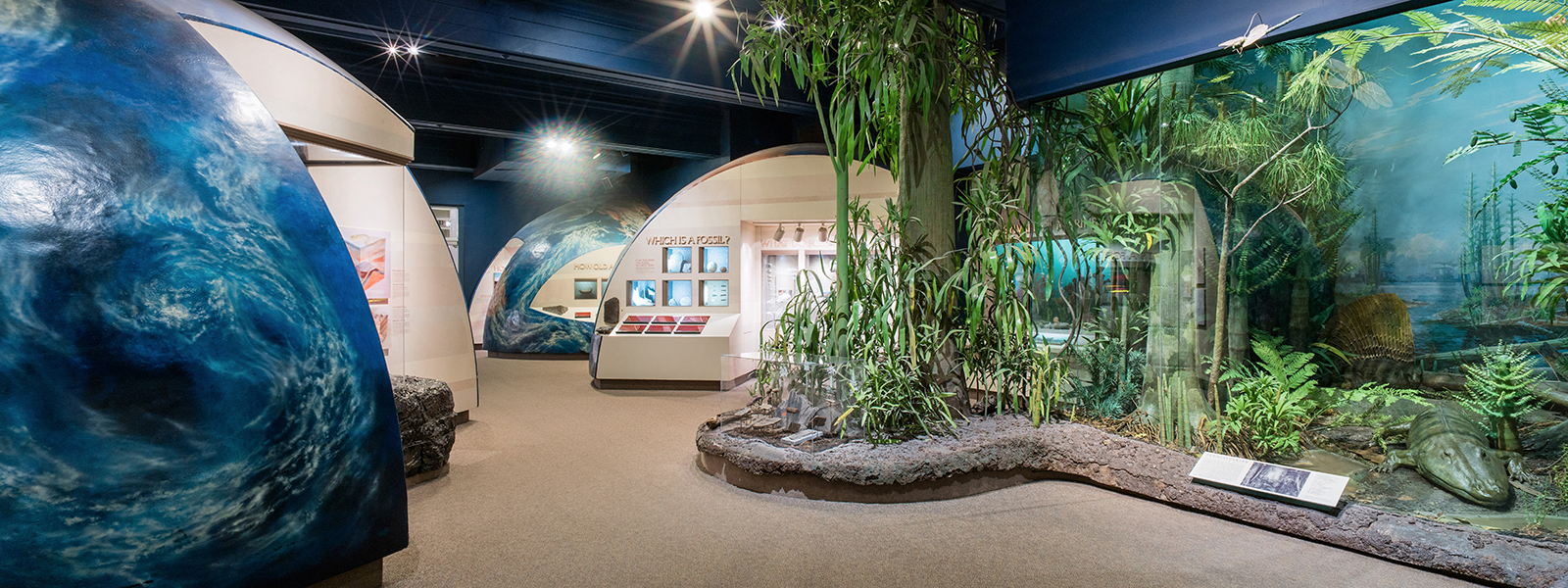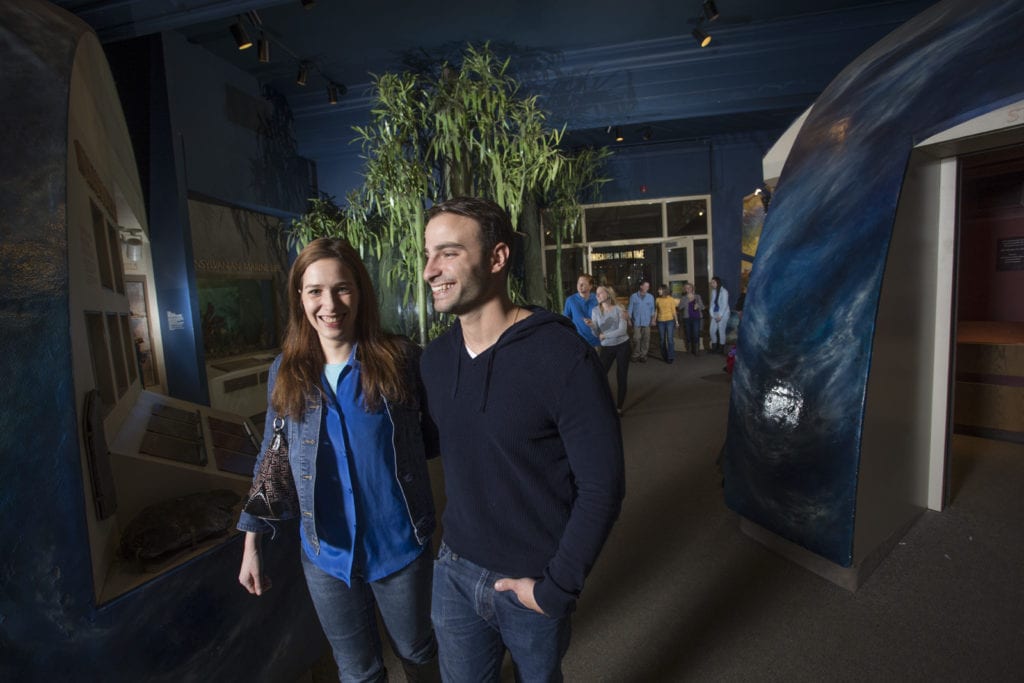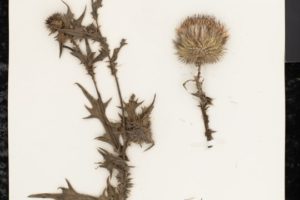
What shaped the Earth’s surface? How are fossils formed? What did western Pennsylvania look like millions of years ago when giant lizards roamed through our once-tropical forests? Learn the answers to these questions and more when you explore the ever-changing nature of our planet in Benedum Hall of Geology.
Three Earth-like domes highlight geological time and dating, fossils, shaping the Earth, and Pittsburgh geology. A fourth dome explores the origin, location, and economic development of coal, oil, and gas. A strong emphasis is placed on the geological processes that shaped Pennsylvania and its neighbors, Ohio and West Virginia. The Stratavator offers a simulated-elevator ride deep into the Earth.

Learn about the Invertebrate Paleontology Collection at the Museum
The Section of Invertebrate Paleontology has close to three-quarters of a million fossils in its collection. Because of the special interest in the Paleozoic Era fossils by the section’s four curators and the central location of Carnegie Museum Natural History within the Appalachian Basin, the Paleozoic Era fossils make up almost half the collection.
Blogs about Benedum Hall of Geology

Exploring the Role of Leaf Litter In Our Forests
by Abby Yancy Leaf litter is the dead plant material that has fallen from trees, shrubs, and other plants. It hangs around …
Carnegie’s Cactus: Carnegie gigantea
by Patrick McShea Diplodocus carnegii, a sauropod star of Dinosaurs in Their Time, is not the only large organism exhibited at Carnegie …
Collected on this Day 105 years ago
So long, leaves. Autumn has fallen. This specimen of red maple (Acer rubrum) was collected on November 13, 1915 by Otto Jennings …
Collected on this Day in 1966: Santa Clauses
Christmas in July…”Santa Claus” floating in the air. (Or I guess, technically Boxing Day in July, if that’s a thing.) Make a …
